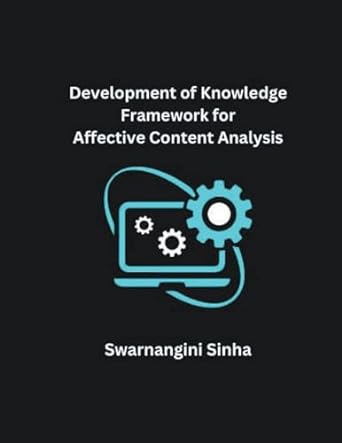Question
Using Python 3 ( I will rate the answer) (Only Python 3 programmers only!) Edit your program from assignment 6 Write a new function that
Using Python 3 ( I will rate the answer) (Only Python 3 programmers only!)
Edit your program from assignment 6
Write a new function that returns a transposing dictionary:
It has two parameters: whether the original chords use sharps or flats, and the number of half-steps
Build the dictionary using each note as a key and the note offset by the number of half-steps as the associated value
For example, if the sharps were used, the notes are A ,A#, B, C, C#, etc. And if the number of half-steps is 10, the dictionary would be {A:G, A#:G#, B:A, C:A#, C#:B, etc}.
Edit your function that transposes:
Remove any code that produces a scale of notes (since this is now performed in the dictionary function)
Before the loop where you transpose, call your function that makes the transposing dictionary
Inside of the loop where you transpose, use the dictionary to determine the transposed root
After you have completed the previous steps, edit the main function:
Prompt the user for whether the result should contain sharps or flats
Pass this as a parameter when you call your transpose function
Edit both your transpose function and your dictionary function:
Add a third parameter for whether the result should contain sharps or flats
Edit the dictionary function
The dictionary keys will remain the same as previously.
However, the dictionary values will depend on whether the new parameter for the function indicates to use sharps or flats in the result. If sharp result, the dictionary values will include A, A#, B, C, C#, D, D#, E, F, F#, G, G#; if flat result, the dictionary values will include A, Bb, B, C, Db, D, Eb, E, F, Gb, G, Ab
Examples: Transposing "Eb D C F Bb G" -1 half-steps with a flat result should produce the string "D Db B E A Gb". But with a sharp result it should be "D C# B E A F#". Transposing "D# D C F A# G" +11 half-steps with a sharp result should produce the string "D C# B E A F#". But with a flat result it should be "D Db B E A Gb". Transposing "Eb F7 Bb7 Eb Gm Ab Gm Fm Eb" -1 half steps to sharps, the final result is "D E7 A7 D F#m G F#m Em D".
Down below is assignment 6. Now we need to edit it according to the instruction above.
def main(): # chords = "Eb F7 Bb7 Eb Gm Ab Gm Fm Eb" chords = input("Enter string of chords: ") # chords = "D E7 A7 D Gbm G Gbm Em D" halfsteps = int(input('how many half steps? ')) print(transpose(chords, halfsteps))
def makeChordList(s): return s.split()
def transpose(chrdstr, halfsteps): flat = "S Bb B C Sb S Eb E F Gb G Ab".split() # Flat notes sharp = "A A# B C C# D D# E F F# G G#".split() # Sharp notes if 'b' in chrdstr: scale1,scale2 = flat,sharp # keeping track of both flat and sharp scales else: scale1,scale2 = sharp,flat
chrdlst = makeChordList(chrdstr) upChords = [] # Tuple list tchords = [] # Turns it into a list
# creating tuple with root and variation split into components for c in chrdlst: x = [tuple([c.split(i)[0]+i, c.split(i)[1]]) for i in scale1 if i in c] # adding the delimiter after split if len(x) > 1: # removing faulty tuple from the data x = [x[0]] if len(x[0][0]) > len(x[1][0]) else [x[1]] upChords.append(x[0])
for c in upChords: # c is a tuple and c[0] is root to be transposed i = (scale1.index(c[0]) + halfsteps) % 12 if 'S' in scale1[i]: # modifying the scale from flat to sharp if note is 'S' to match the output tchords.append(scale2[i]+c[1]) else: tchords.append(scale1[i] + c[1])
return ' '.join(tchords)
if __name__ == '__main__': main()
Step by Step Solution
There are 3 Steps involved in it
Step: 1

Get Instant Access to Expert-Tailored Solutions
See step-by-step solutions with expert insights and AI powered tools for academic success
Step: 2

Step: 3

Ace Your Homework with AI
Get the answers you need in no time with our AI-driven, step-by-step assistance
Get Started


